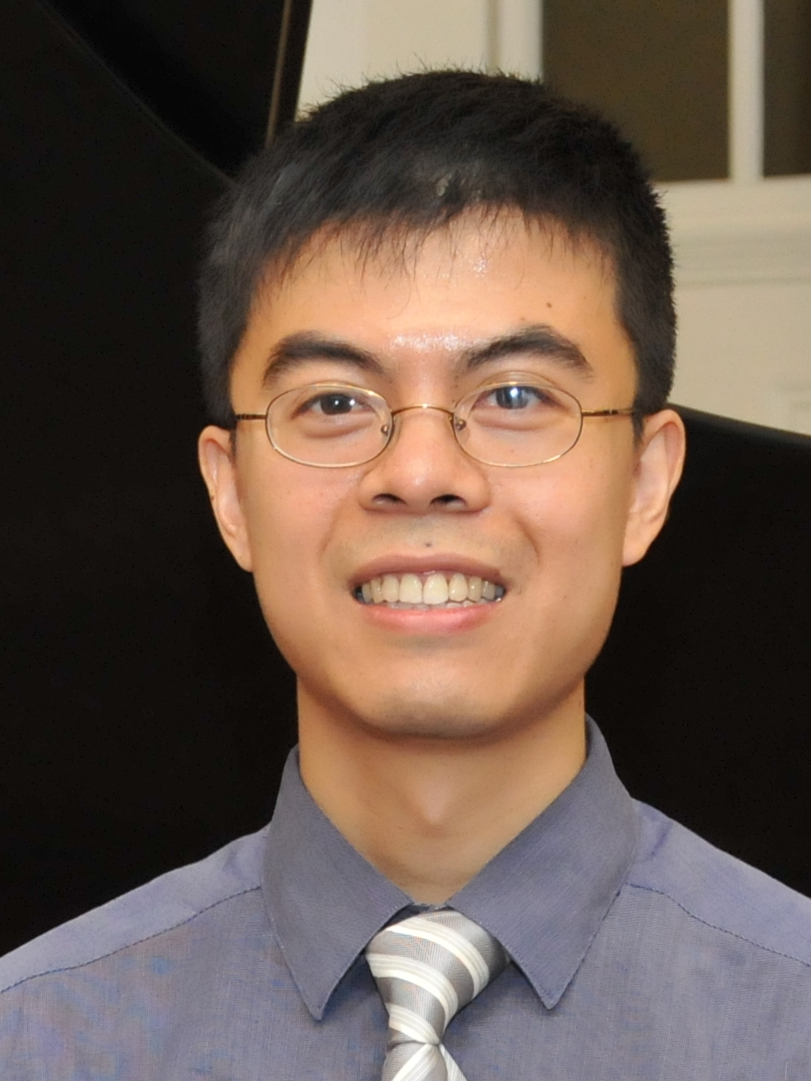張智鈞教授
 副教授
副教授
電話: 3943 9389
電郵: Email住址會使用灌水程式保護機制。你需要啟動Javascript才能觀看它
地址:
Room 322A, Lo Kwee-Seong Integrated Biomedical Sciences Building, Area 39, CUHK
網址:
https://scholar.google.com.hk/citations?user=0jvjVzQAAAAJ&hl=en
Publons: https://publons.com/researcher/1432042/vincent-c-k-cheung/
ORCID: https://orcid.org/0000-0002-6031-7320
個人簡介
Prof. CHEUNG Chi Kwan Vincent (張智鈞) A motor neuroscientist and biomedical engineer, Vincent C. K. Cheung is Associate Professor at the School of Biomedical Sciences of The Chinese University of Hong Kong (CUHK). He obtained his B. Sc. in Mathematics and Pharmacology & Therapeutics from University of British Columbia, Ph. D. in Neuroscience and Biomedical Engineering from MIT and Harvard Medical School, and then postdoc at the McGovern Institute for Brain Research of MIT. Prof. Cheung’s research has focused on understanding how the central nervous system (CNS) controls voluntary movement and enables learning of motor skills. He is also interested in exploring how knowledge of movement modules may be translated into a new rehabilitation strategy for stroke survivors. To answer his scientific questions, Prof. Cheung has relied on collection of neurophysiological and motion data from humans, the use of novel neural technologies in animal models, and computational analysis of complex data using machine learning techniques. Prof. Cheung’s papers have appeared journals including Nature Communications, PNAS, Journal of Neuroscience, and Neural Computation. He has been invited to speak for both professional conferences (e.g., Neural Control of Movement Society) and events for the general audience (e.g., TEDxCUHK). Prof. Cheung’s research is supported by the CUHK Faculty of Medicine Faculty Innovation Award, the Hong Kong Research Grants Council, and other sponsors. Recipient of the Angus MacDonald Teaching Award of MIT (2006) and Teachers of the Years Award of CUHK Medicine (2021), Prof. Cheung directs courses in neuroscience and human anatomy at CUHK. He also serves as a teaching staff of the university's C. W. Chu College.
- Motor neuroscience.
- Neural control of movement.
- Mechanisms of motor learning, motor development and post-injury recovery.
- Stroke rehabilitation.
- Novel neural technologies.
- Algorithms for neural data analysis.
- Biomechanics.
- Cheung, V.C.K., & Seki, K. (2021). Approaches to revealing the neural basis of muscle synergies: A review and a critique. Journal of Neurophysiology, 125: 1580-1597. [Invited in-depth review for acknowledging the career of Emilio Bizzi, Institute Professor Emeritus of MIT]
- Cheung, V.C.K.*, Cheung, B.M.F.*, Zhang, J.H., Chan, Z.Y.S., Ha, S.C.W., Chen, C-Y., & Cheung, R.T.H. (2020). Plasticity of muscle synergies through fractionation and merging during development and training of human runners. Nature Communications, 11: 4356.
- Rinaldi, L., Yeung, L-F., Lam, P.C.H., Pang, M.Y.C., Tong, R.K.Y., & Cheung, V.C.K. (2020). Adapting to the mechanical properties and active force of an exoskeleton by altering muscle synergies in chronic stroke survivors. IEEE Transactions on Neural Systems and Rehabilitation Engineering, 28(10): 2203-2213.
- Severini, G., Koenig, A., Adans-Dester, C., Cajigas, I., Cheung, V.C.K.*, & Bonato, P.* (2020). Robot-driven locomotor perturbations reveal synergy-mediated, context-dependent feedforward and feedback mechanisms of adaptation. Scientific Reports, 10: 5104.
- Cheung, V.C.K.*, Zheng X-C.*, Cheung R.T.H., & Chan R.H.M. (2020). Modulating the structure of motor variability for skill learning through specific muscle synergies in elderlies and young adults. IEEE Open Journal of Engineering in Medicine and Biology, 1: 33-40.
- Cheung, V.C.K.*, Niu, C.M.*, Li, S., Xie, Q., & Lan, N. (2019). A Novel FES Strategy for Poststroke Rehabilitation Based on the Natural Organization of Neuromuscular Control. IEEE Reviews in Biomedical Engineering, 12, 154-167.
- Caggiano, V.*, Cheung, V.C.K.*, & Bizzi, E. (2016). An optogenetic demonstration of motor modularity in the mammalian spinal cord. Scientific Reports, 6, 35185.
- Devarajan, K., & Cheung, V.C.K. (2014). On non-negative matrix factorization algorithms for signal-dependent noise, with application to electromyography data. Neural Computation, 26, 1128-1168.
- Cheung, V.C.K., DeBoer, C., Hanson, E., Tunesi, M., D'Onofrio, M., Arisi, I., Brandi, R., Cattaneo, A., & Goosens, K.A. (2013) Gene expression changes in the motor cortex mediating motor skill learning. PLoS One, 8(4): e61496
- Bizzi, E., & Cheung, V.C.K. (2013). The neural origin of muscle synergies. Frontiers in Computational Neuroscience, 7, 51.
- Cheung, V.C.K., Turolla, A., Agostini, M., Silvoni, S., Bennis, C., Kasi, P., Paganoni, S., Bonato, P., & Bizzi, E. (2012). Muscle synergy patterns as physiological markers of motor cortical damage. Proceedings of the National Academy of Sciences, USA, 109(36), 14652-14656. [Recommended by Faculty of 1000]
- Cheung, V.C.K., Piron, L., Agostini, M., Silvoni, S., Turolla, A., & Bizzi, E. (2009). Stability of muscle synergies for voluntary actions after cortical stroke in humans. Proceedings of the National Academy of Sciences, USA, 106(46), 19563-19568.
- Cheung, V.C.K., d’Avella, A., & Bizzi, E. (2009). Adjustments of motor pattern for load compensation via modulated activations of muscle synergies during natural behaviors. Journal of Neurophysiology, 101, 1235-1257. [Recommended reading listed in the textbook, Brain Structure and Its Origins, by Gerald E. Schneider (2014, MIT Press)]
- Tresch, M.C., Cheung, V.C.K., & d’Avella, A. (2006). Matrix factorization algorithms for the identification of muscle synergies: evaluation on simulated and experimental data sets. Journal of Neurophysiology, 95, 2199-2212.
- Cheung, V.C.K., d’Avella, A., Tresch, M.C., & Bizzi, E. (2005). Central and sensory contributions to the activation and organization of muscle synergies during natural motor behaviors. Journal of Neuroscience, 25(27), 6419-6434.
* Equal contributions
- Croucher Summer Courses [PI; 01-Feb-19]: "Introduction to Computational Neuroscience".
- RGC - Research Impact Fund [PI; 28-Jan-19]: "A Wearable for Post-stroke Rehabilitative Multi-muscle Stimulation Inspired by the Natural Organization of Neuromuscular Control".
- RGC - General Research Fund (Early Career Scheme) [PI; 01-Jan-19]: "Learning to Walk: Muscle Coordinative Structures during Gait Development in Normal Infants and Children with Spinal Muscular Atrophy".
